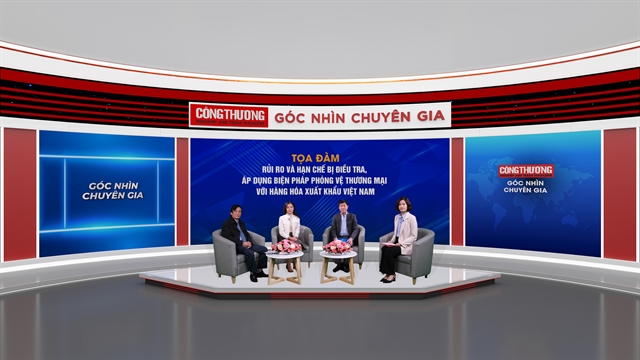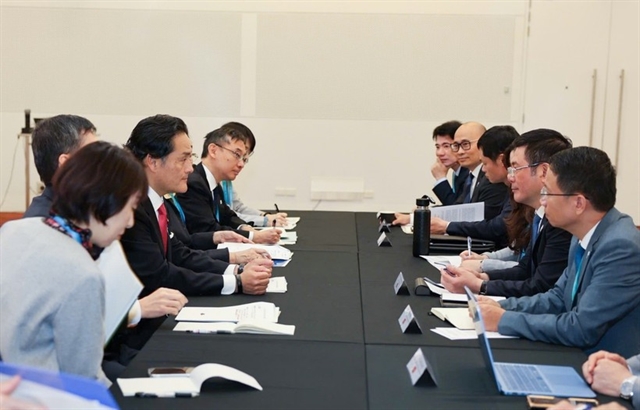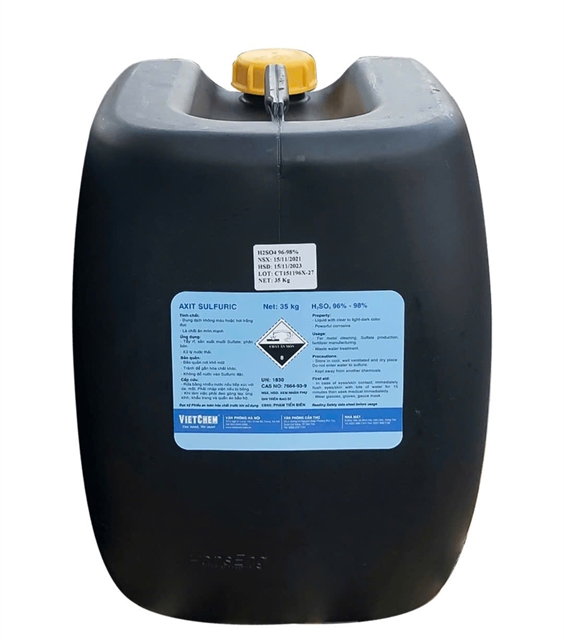 Economy
Economy


|
| Panel speakers discuss ways to help Vietnamese firms minimise damage from trade defence measures and barriers. Photo tapchicongthuong.vn |
HÀ NỘI — More Vietnamese products have been targeted by trade defence mechanisms and barriers as the country enters numerous free trade agreements and integrates further into the global economy, said policymakers and industry experts during an online conference yesterday in Hà Nội.
Chu Thắng Trung, deputy head of the trade defence department under the Ministry of Industry and Trade (MoIT), said Vietnamese products are to face greater scrutiny and barriers in the future.
He said the number of cases faced by Vietnamese firms has increased significantly in recent years, going from 25 cases in 2012 to 109 in 2022. On top of traditional anti-dumping and anti-subsidy cases, Vietnamese goods have been facing deeper investigations aimed at firms that attempted to circumvent trade defence measures and product origin rules.
In addition, more markets have turned their attention to Vietnamese products including Mexico, Indonesia, Malaysia and the Philippines.
On the other hand, Trung said it has been a reflection of Vietnamese products' popularity and a positive sign of their increased market share in international markets.
Dr Lương Đức Long, vice president and secretary-general of the Vietnam Cement Association, said it's only natural for Vietnamese products to become targets of trade investigations as the country increases its exports.
Long said in recent years, the Vietnamese concrete industry has found ways to enter various markets to become one of the world's largest exporters, only behind China and India in volume. Việt Nam alone accounted for 92 per cent of all concrete imports to the Philippines. As a result, Vietnamese concrete makers have been sued by local firms.
Regarding the numerous free trade agreements the country has signed, Trung said trade barriers and defence mechanisms are here to stay even after import tariffs were removed as countries continued to protect domestic industries.
He urged Vietnamese firms to take the initiative in participating and preparing for potential trade conflicts and to fully comply with local trade regulations.
In order to minimise potential damage from trade defence mechanisms and barriers MoIT advised Vietnamese firms stay up-to-date with market developments and set up early warning systems.
For example, a sudden rise in the import volume of certain goods could result in an investigation on the part of importing markets. It is usually a good idea to have a contingency plan in place for markets that have been known to often trigger defence mechanisms such as Australia and Canada.
In anti-dumping and anti-subsidy cases, investigations may take years. Firms must be prepared to dedicate the required manpower to follow such cases, as well as to afford the costs, which may become significant especially when the assistance of legal experts is needed. All of these costs must be factored in when firms conduct market studies to assess whether they can afford to enter such markets.
The ministry urged firms that are aiming for the same markets to band together, as well as to stay in close contact with governmental trade agencies, to reduce associated costs and exchange experiences and lessons in entering new markets.
In addition, firms must seek to diversify their markets, improve product quality to become less reliant on price-based competition and conduct risk careful assessments as part of their business operations. VNS




